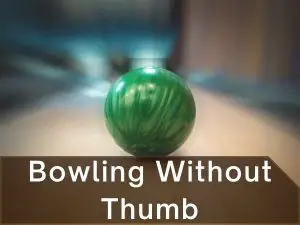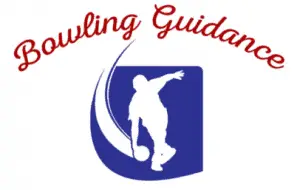 Did you know you have the option when it comes to using the thumb hole of your bowling ball? Yes, you may or may not insert your thumb into the thumb hole of your bowling ball when you play. This particular technique is called two-finger bowling. Basically, you place your middle and ring finger inside the top two holes and keep the thumb out of the bottom hole. But effective is this bowling method? Can you possibly play better? There’s so much to know, and that is why I am here to guide you properly.
Did you know you have the option when it comes to using the thumb hole of your bowling ball? Yes, you may or may not insert your thumb into the thumb hole of your bowling ball when you play. This particular technique is called two-finger bowling. Basically, you place your middle and ring finger inside the top two holes and keep the thumb out of the bottom hole. But effective is this bowling method? Can you possibly play better? There’s so much to know, and that is why I am here to guide you properly.
What are the rules of no thumb bowling?
Bowling without using the thumb is a way of bowling that many bowlers follow and are more comfortable with it. This method is often followed by bowlers to create a tremendous amount of revs on their bowling balls. So is there any limitation for no-thumb bowling? Of course, there is!
USBC has strict rules regarding the no-thumb bowling method. The specifications since August 1, 2014, is that— Bowlers are not required to use all of the finger holes in their bowling balls in any specific delivery. But, the bowlers must be able to demonstrate with their bowling hands. It is also specified that each gripping hole of the bowling ball can be simultaneously used for the ball gripping purposes. If the thumb hole is not used by bowlers for gripping purposes, then it would be used as a balance hole during the ball delivery.
So if you don’t use the thumb hole of your bowling ball, what should you do? First thing first, you can either insert your thumb and use the thumb hole or just as a balance hole, but not for both purposes. So if you’re not using the thumb hole, make sure your ball is meeting the static balance requirements. If it doesn’t then the ball won’t be approved by USBC. If your bowling ball has both a balance hole and a thumb hole, you need to plug at least one of them.
What are the pros and cons of Bowling without thumb?
Bowling without thumb is not for everyone. Like everything in the world, bowling without thumb has its own pros and cons. Some can adapt this method for better accuracy and higher revs while others can even fit the ball in hand without the help of the thumb hole.
Pros:
Let’s discuss the pros first.
- Did you even notice how Tom Daugherty plays? He is a one-handed no-thumb bowler. Although you can benefit from the no thumb method if you use both of your hands, Tom can do it single-handedly. But that doesn’t mean anyone can do it. First, check whether you can fit your ball in your hand without the help of a thumb hole. If you do, have fun rolling the ball.
- One of the most discussed pros of thumbless bowling is that it creates more rev rates. How true is that? If the ball is thrown properly, you really can transform your playing style. No thumb bowling can help you generate more revs, carry the ball farther down the lane, and then smash the pins.
- Once I conversed with some two-fingered bowlers who claim that not only their rev rates are high but also the accuracy of their bowling. Bowlers with or without thumb can generate equal amounts of revs, but when it comes to accuracy, no thumb bowlers enjoy the advantages. I myself have witnessed their accuracy. And trust me when I tell you, they were not lying, nah ah!
Cons:
Now, let’s put some light on the cons.
- One of the most common drawbacks of bowling without a thumb is that your hands may not be big enough to hold the ball. When you can’t hold it properly with the thumb gripping, you’re more likely to switch to two-handed bowling. But that will fully change your bowling style.
- When you bowl without using the thumb, you will see that your wrist is cupping the ball, not gripping it. When you do this, you’re actually holding the bowling ball between your wrist and arm. This clearly indicates that you have more limitations. You cannot go too high with your armswing before you release the ball, meaning less control over the ball. As a result, you lose some possibilities to adjust your bowling ball.
- You lose a great amount of control when you’re not using your thumb to grip the ball. If your intention is to hook your ball, no-thumb bowling will lead to early skid and perfect angular strikes. But that is possible only on a blocked house shot. Straight bowlers are unaffected in that case, so bowlers who hook cannot experience the best kind of advantage.
Is it good or bad for one-handed bowling without thumb?
One-handed bowlers without the thumb have their fair share of struggle. Players who can transition to double-handed no thumb bowling get a more consistent result in bowling. But switching to two-handed bowling is another story. The results are pretty clear— you will get a satisfactory ball reaction and average if you use two hands and no thumb. The level of stress on one-handed no-thumb bowling is too high and if you don’t have the physical ability to do that, it is pointless to even try it in the first place. So, I will recommend you not to attempt one-handed bowling without thumb. If your palm is big enough and you really can control and balance the ball, then sure, go ahead and see how well you can do that. If it seems uncomfortable or is ruining your shots, abort the mission and look for less complicated bowling techniques.
Conclusion
There’s no boundary in the creativity of bowling. Bowling without thumb is very creative, yet quite complicated. My best tip for you would be is to see for yourself what suits you best. If you can successfully perform one-handed bowling without the help of the thumb, cool! If you need to use both of your hands, that’s cool as well. And if none of these seems appropriate for you, then just stick to the traditional bowling style. Whatever you do, just make sure you feel fine doing that. That’s all folks! Ciao.

